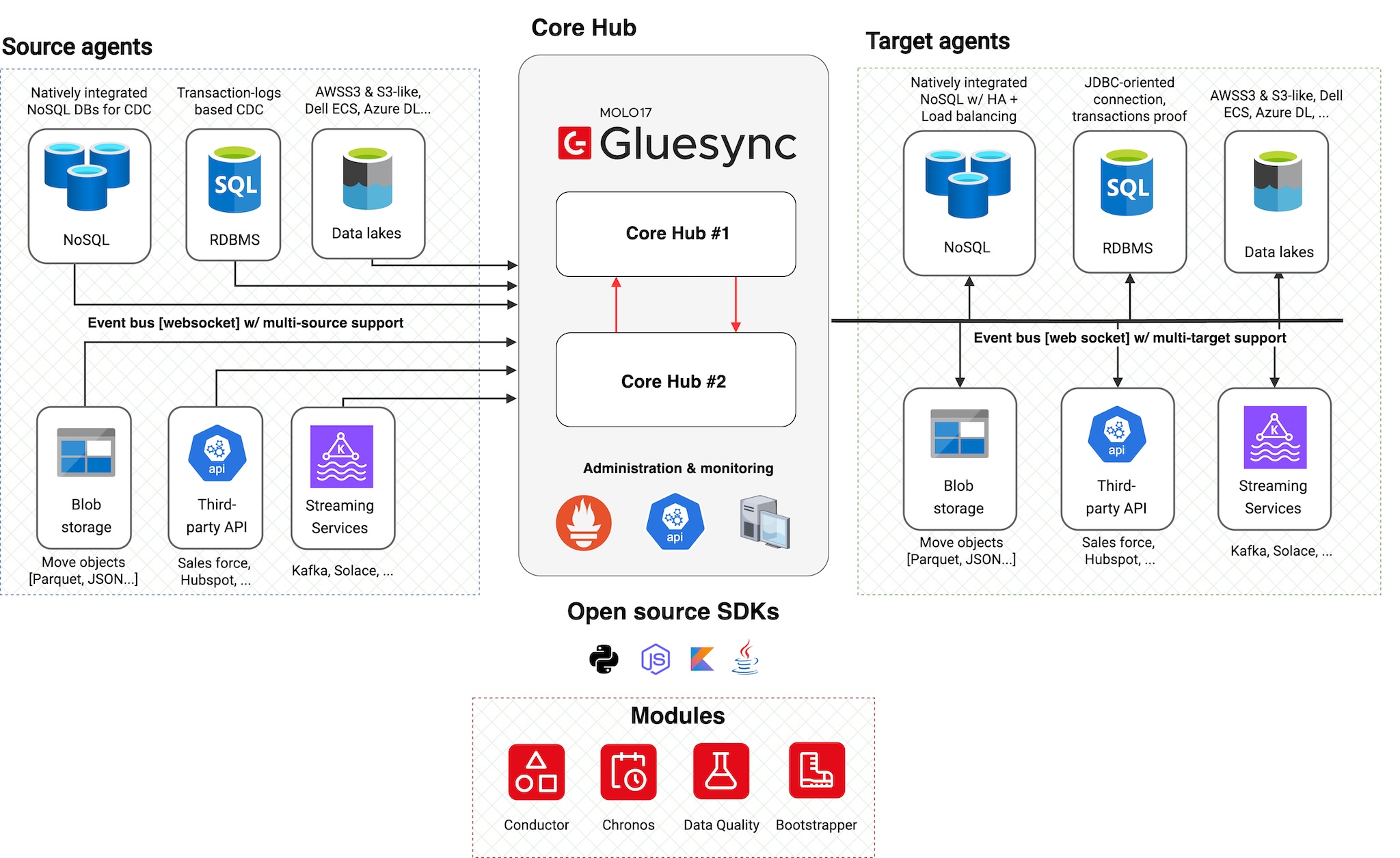Gluesync Architecture
Gluesync’s architecture is built on a flexible, agent-based system centered around the Core Hub, with extensibility through SDKs and modules. This design enables real-time data integration across diverse platforms while ensuring scalability, reliability, and security.
Architecture Overview

The architecture consists of five main components:
-
Source Agents: Handle data extraction and change capture
-
Core Hub: Orchestrates data flow and system operations
-
Target Agents: Manage data loading and transformation
-
SDKs: Enable developer integration with Core Hub
-
Modules: Extend platform functionality through SDK-based components
Advanced Features
SDKs and Developer Integration
Open Source SDKs
Gluesync provides open source SDKs that enable developers to build custom integrations and extensions:
| SDK | Features |
|---|---|
Python SDK |
* Core Hub handshake protocol implementation * Authentication and authorization * Event handling and processing * Available at GitLab |
Node.js SDK |
* JavaScript-based Core Hub integration * Real-time event processing * Promise-based API design * Available at GitLab |
Coming Soon |
* Java SDK * Kotlin SDK |
Modules
Platform Extensions
Modules are platform extensions built on top of Gluesync SDKs that enhance system capabilities:
| Module | Functionality |
|---|---|
Chronos |
* Advanced scheduling capabilities * Time-based job orchestration * Recurring task management * Available at GitLab |
Bootstrapper |
* System initialization * Configuration management * Deployment automation * Available at GitLab |
Monitoring & Administration
Built-in Monitoring
-
Real-time metrics collection
-
Performance monitoring
-
Resource utilization tracking
-
Alert management
Administration Tools
-
Web-based admin interface
-
REST API access
-
Configuration management
-
System health monitoring
|
For detailed deployment instructions, see our Deployment Guide for Docker Compose and Kubernetes. |